The Art of Tying Fly-Fishing Flies
A photo collection of premiere hand-crafted bugs
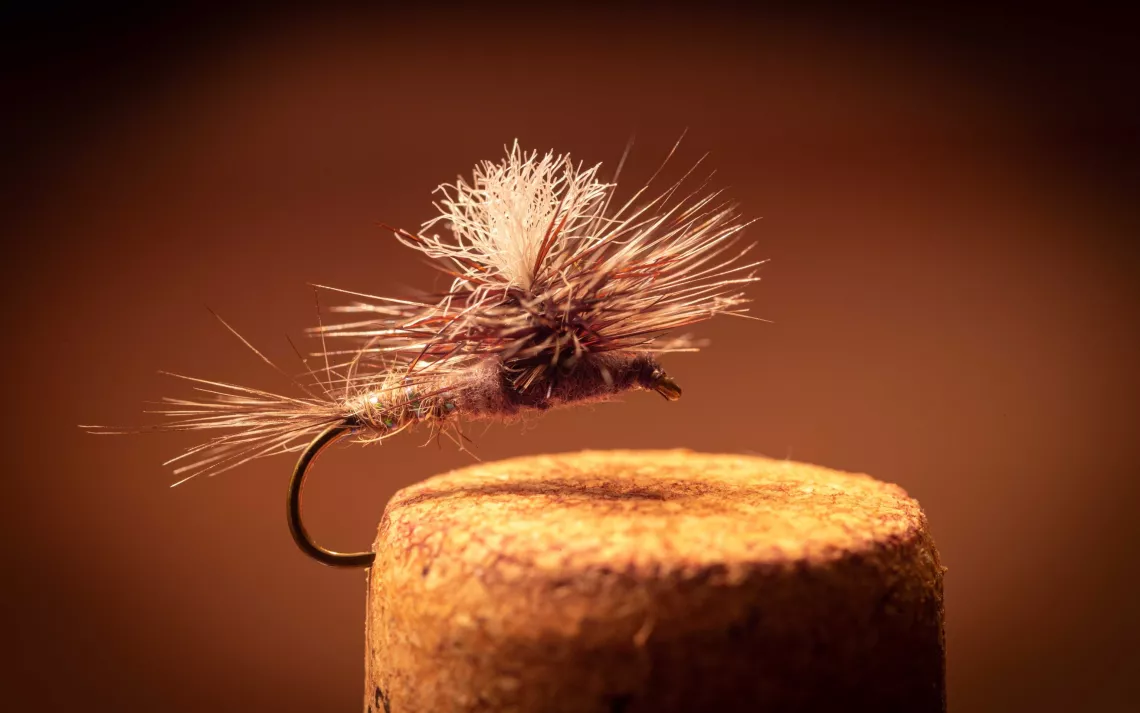
The fly: sparkle purple haze
Materials used: rooster tail, rooster hackle parachute, Sulky tinsel wrap, EP fiber post
Bug it imitates: adult mayfly
When nonanglers think of flies, they often picture a fly that looks something like this. Adult mayfly imitations are some of the most used in the sport because mayflies are by far the most important food source for trout. There are dozens of species of mayfly, and their hatching patterns are often predictable. Some species hatch on March afternoons, while others may hatch in mornings during the second week of July. They all have different appearances, which is why fly tyers use different patterns depending on the time of year.
This pattern uses a mix of natural and synthetic fibers to imitate a range of mayfly species. The body contains an iridescent purple material that attracts trout and gives the pattern its name.
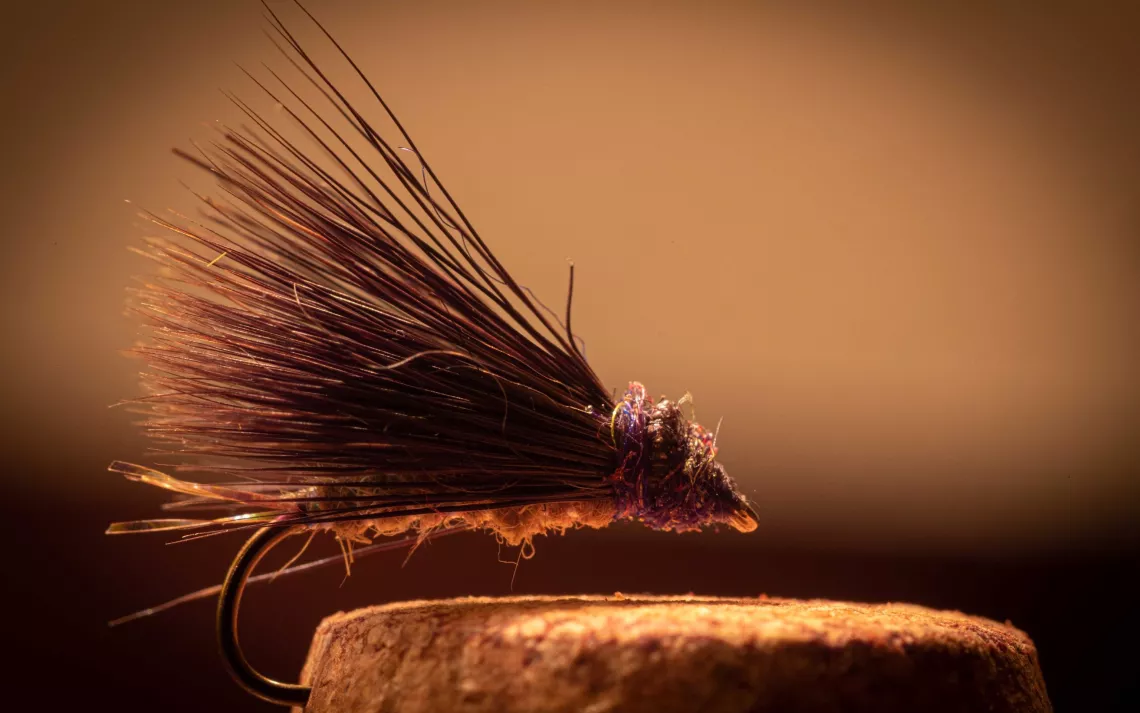
The fly: moose hair caddis
Materials used: moose hair wing, snowshoe hair underbody, Krystal Flash tail
Bug it imitates: adult Mother’s Day caddis
The hair found on moose and other large ungulates including elk and deer is highly buoyant, and their thick fibers have long been used to mimic the broad, tapered wing of the adult caddis fly. Caddis are often deceptive on the river, as they can live for more than a month in their adult form, and large swarms will migrate along the river while never touching the water. Anglers will often mistake these migrations for hatches, thus coming up empty-handed, never realizing that the fish aren't feeding because the bugs are just out of reach.
This pattern imitates the Mother’s Day caddis, which, true to form, tends to hatch in mid to late May. Anglers in Montana often miss out on this hatch because it typically happens during runoff—a time when the rivers are swollen and filled with debris from the melting snowpack.
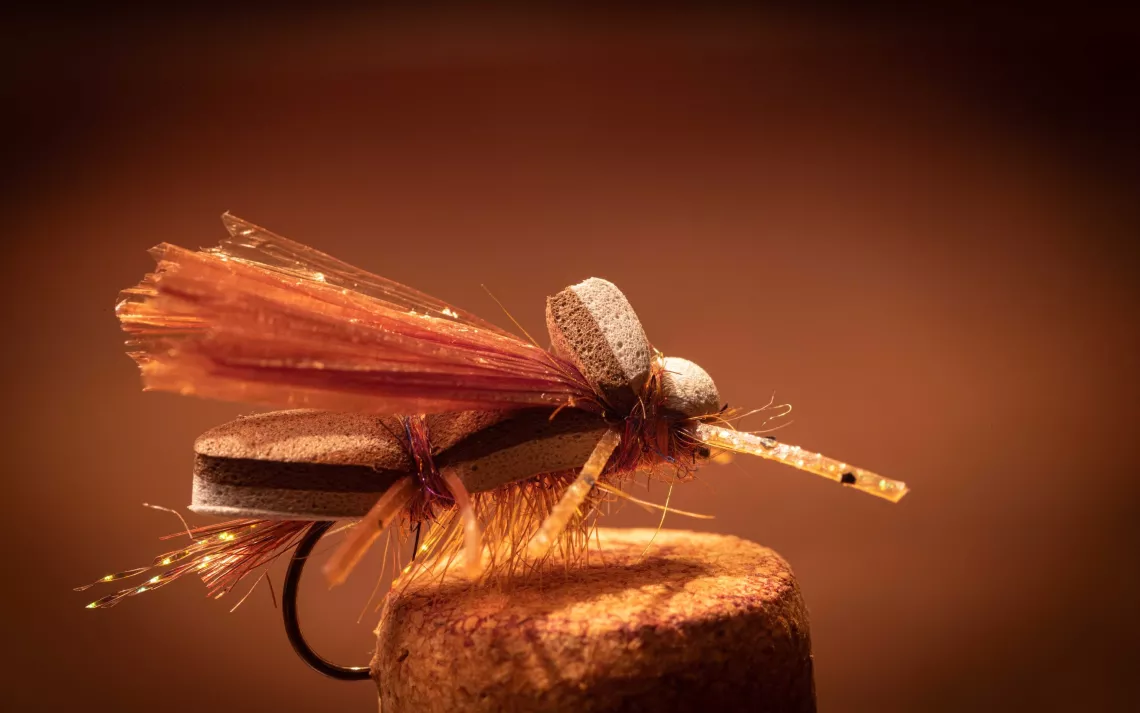
The fly: Swiss miss
Materials used: foam body, raffia wing, hackle underbody, turtlegrass legs, Krystal Flash tail
Bug it imitates: adult stone fly
Stone fly hatches are hard to come by in nature but a sight to behold. Many stone fly species are several inches in length. Hatches create a cloud of insects in the sky and a carpet on the water. The June salmonfly hatch in western Montana is one of the most famous in the world and draws travelers from across the globe.
Paul created this pattern using raffia—a rarely used fly-tying material derived from the leaves of a palm tree native to Africa—to imitate the wings of a stone fly. Meanwhile, hackle from the cape of a rooster makes the thorax look "buggy" underwater, and the foam body keeps it afloat as it travels downstream.
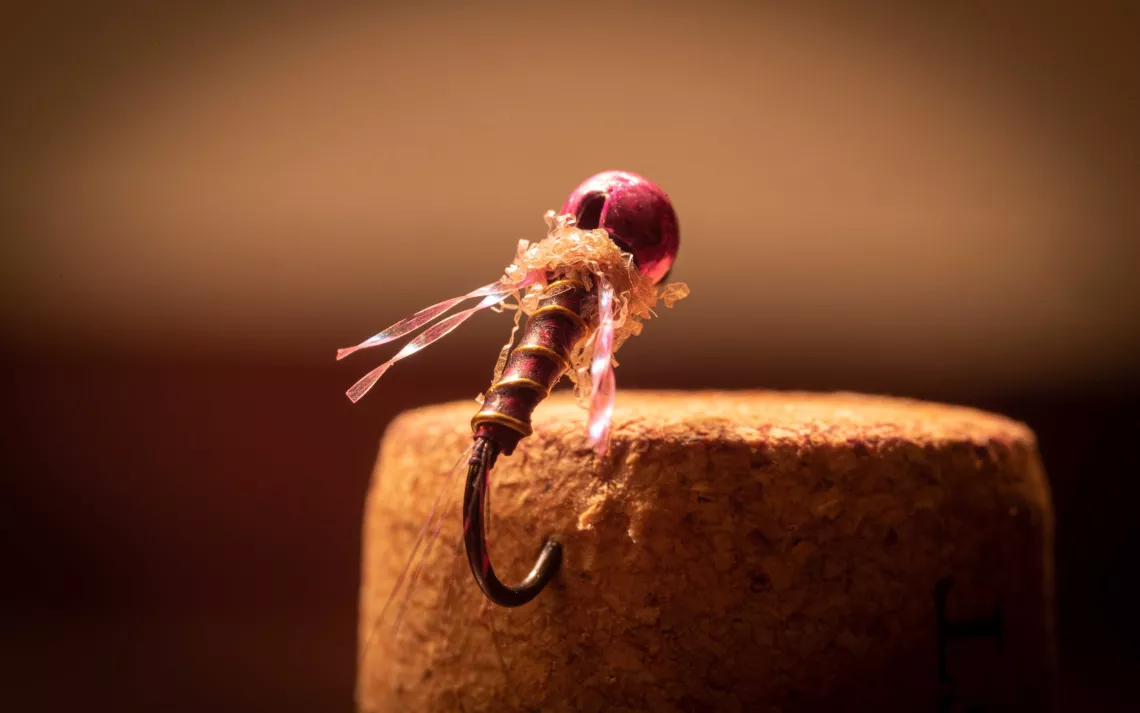
The fly: Paul's pretty pretty pink princess
Materials used: coq de leon tail, holographic body, wire rib, Krystal Flash legs, Ice Dub collar
Bug it imitates: mayfly nymph
One of Paul's signature creations, the pretty pretty pink princess simulates a mayfly larva in general form but falls into the category of an attractor pattern. While many flies are designed with a specific subspecies in mind (there are dozens of species of mayflies, caddis flies, and stone flies), some are designed simply to fool trout.
This pattern uses a mix of modern materials and ancient patterns to effectively attract fish. The collar, legs, and body all contain highly reflective and UV-sensitive materials that stimulate fish. Meanwhile, the tail fibers come from coq de leon, a type of rooster from Spain specifically bred for use in fly-fishing. References to the prized coq de leon date as far back as 1620, when they were first bred in a Spanish monastery for use in fly tying.
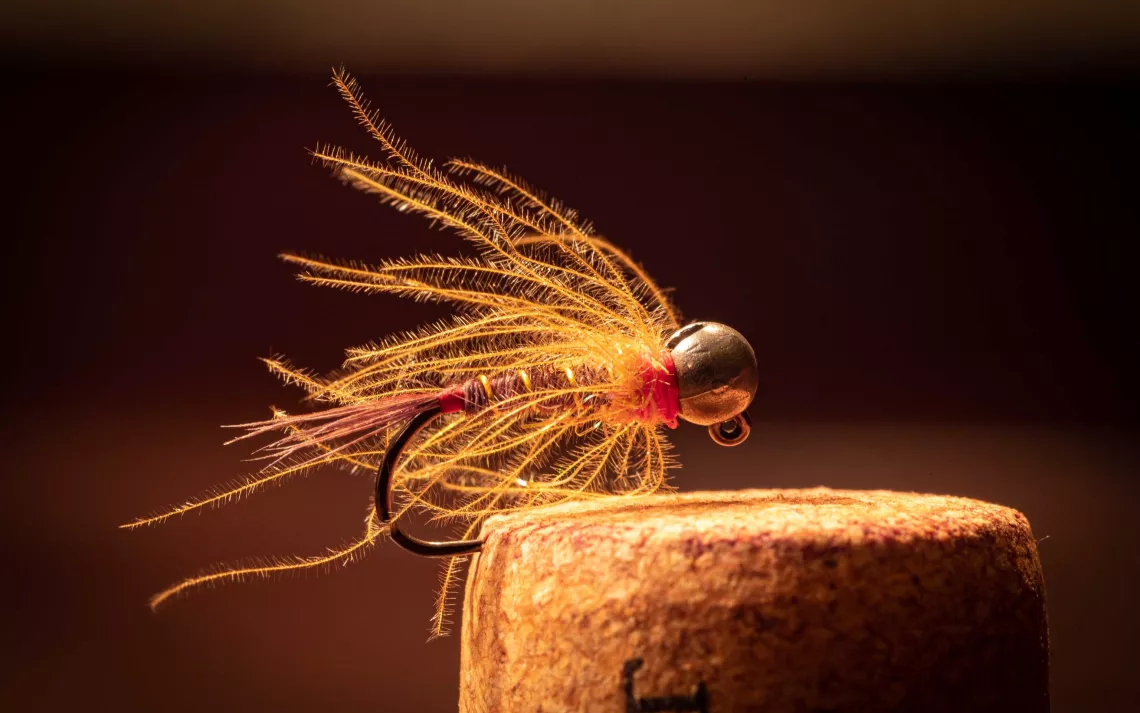
The fly: CDC frenchie
Materials used: cul de canard collar, pheasant tail body and tail, Ice Dub collar, wire rib
Bugs it imitates: caddis and mayfly nymphs
The CDC frenchie is effective as a caddis and mayfly nymph imitation because of the bright-yellow cul de canard collar near the head, which creates an eerily realistic effect as it travels downstream. That effect comes from feathers from a duck's preen gland, whose waterproofing and buoyancy help them stay afloat. When applied to a subsurface fly, these feathers trap bubbles that mimic the gas naturally let off by aquatic insects. Fly tier Lance Egan of Fly Fish Food created this unique pattern.
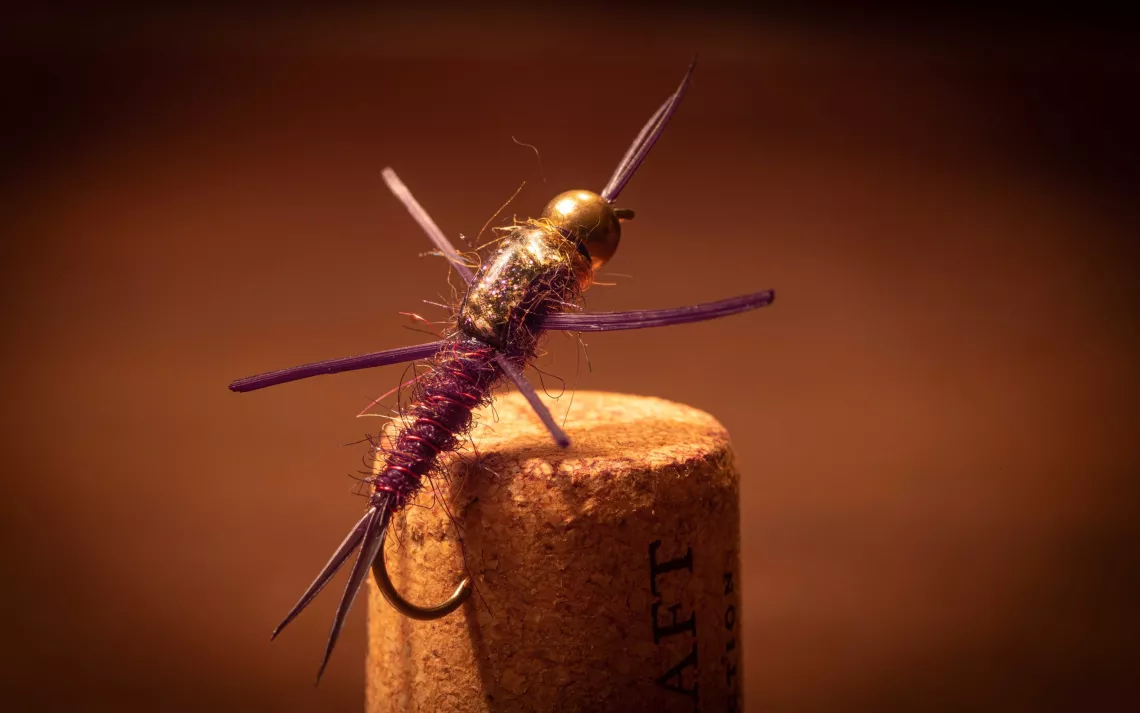
The fly: Thanos stone
Materials used: goose biot tail and antenna, Arizona Simi Seal body, wire rib, turkey tail wing case, Sexi-Floss legs
Bug it imitates: stone fly nymph
By far the largest of the classic trout insects, stone flies also undergo a sub-surface larval stage before hatching into their winged, adult forms. They swim to shore before molting into their adult forms, so these patterns can be more successful when fished along the shoreline.
This pattern features goose biots for the tail and antennae. Biots are stiff barbs that come from the edge of the wing feathers of geese and turkeys, and are often used to simulate tails, legs, antennae, and wings in fly-fishing.
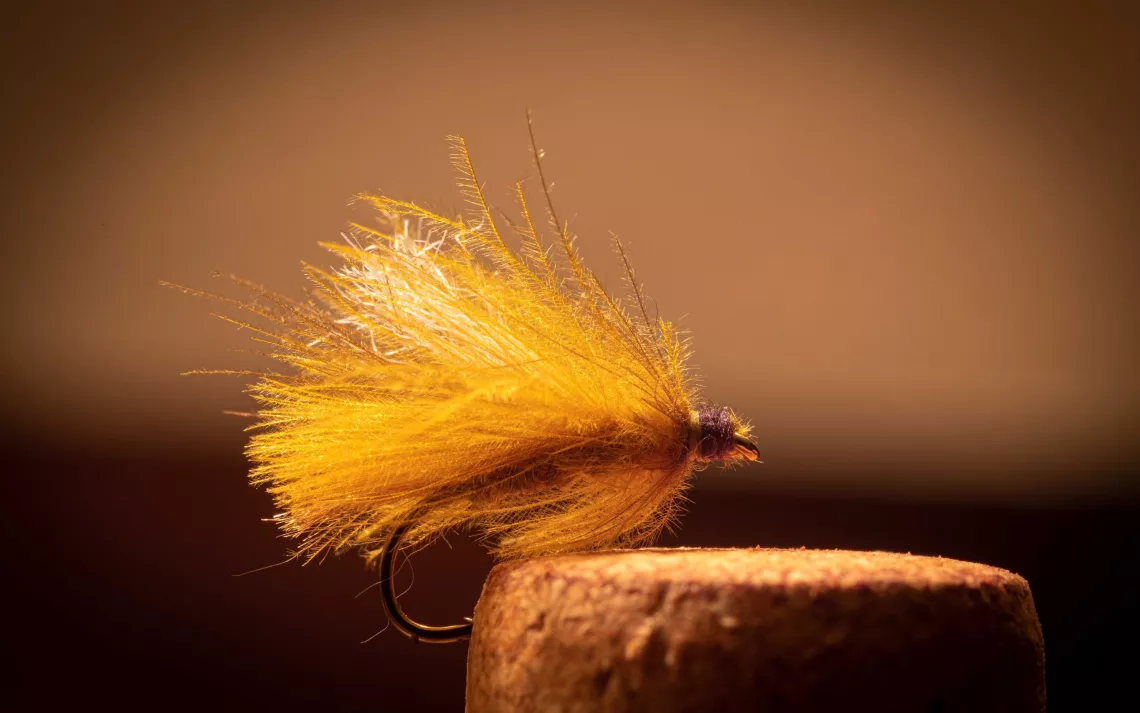
The fly: CDC caddis
Materials used: cul de canard wing, dry fly dubbing body
Bug it imitates: adult caddis
Paul used cul de canard—the extremely buoyant feathers from around the preen gland in ducks—to tie this caddis fly imitation. While most dry flies require periodic application of floatant chemicals to help them maintain buoyancy, those made with CDC tend to stay afloat for much longer before needing any assistance, thanks to their natural characteristics. Ducks secrete much more preen oil than their terrestrial cousins, which helps them stay afloat, and stay dry, during their lives on the water.
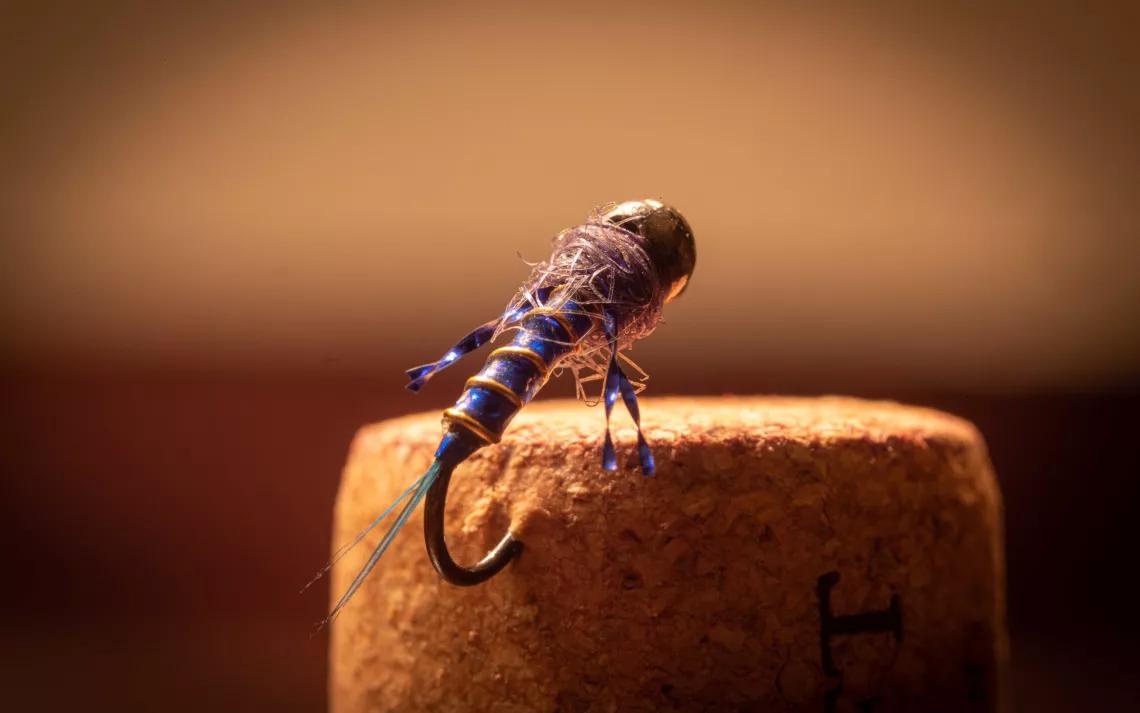
The fly: you're my boy blue!
Materials used: coq de leon tail, holographic body, wire rib, Krystal Flash legs, Ice Dub collar
Bug it imitates: mayfly nymph
Nymph patterns like these are often drifted underneath a buoyant dry fly. The dry fly acts like a bobber, telling the angler whether a fish took the nymph, but can also stimulate fish to strike on its own. This popular, two-pronged setup is called a dry-dropper rig.
Paul ties this attractor pattern with materials meant to make it stand out in the river. Although it doesn't imitate any specific species of mayfly, the highly reflective materials in the body, legs, and collar make it shine in a way that attracts trout and helps stimulate strikes.
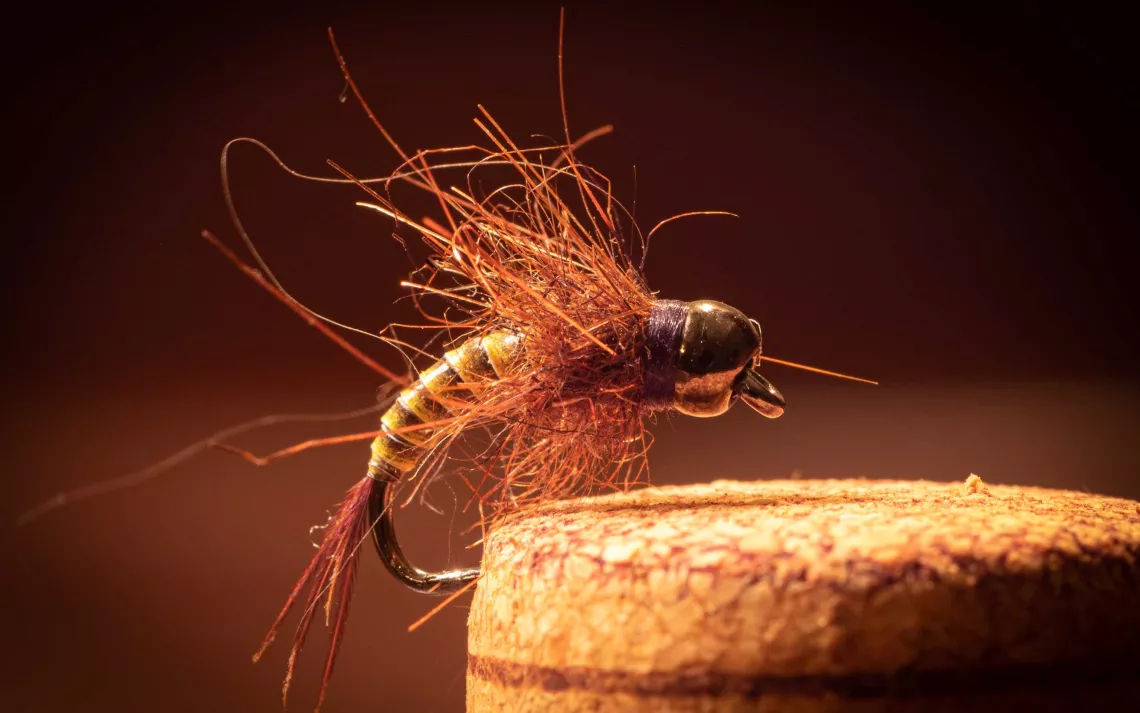
The fly: spiky squirrel caddis
Materials used: squirrel dubbing collar, Rooster Tail tail, quill body
Bug it imitates: caddis fly nymph
In contrast to more familiar forms of fishing, in which lures are reeled in to attract fish, fly-fishing relies on the natural feeding styles of trout. Food is naturally swept downstream, and trout typically stay in one place, eating small insects and baitfish as they float by.
This fly, meant to simulate the aquatic larval form of the caddis fly, makes use of several natural materials deeply rooted in the fly-fishing tradition. Natural fibers give a lifelike appearance and movement to the fly as it drifts downstream and is meant to trick the fish into mistaking it for a live insect.
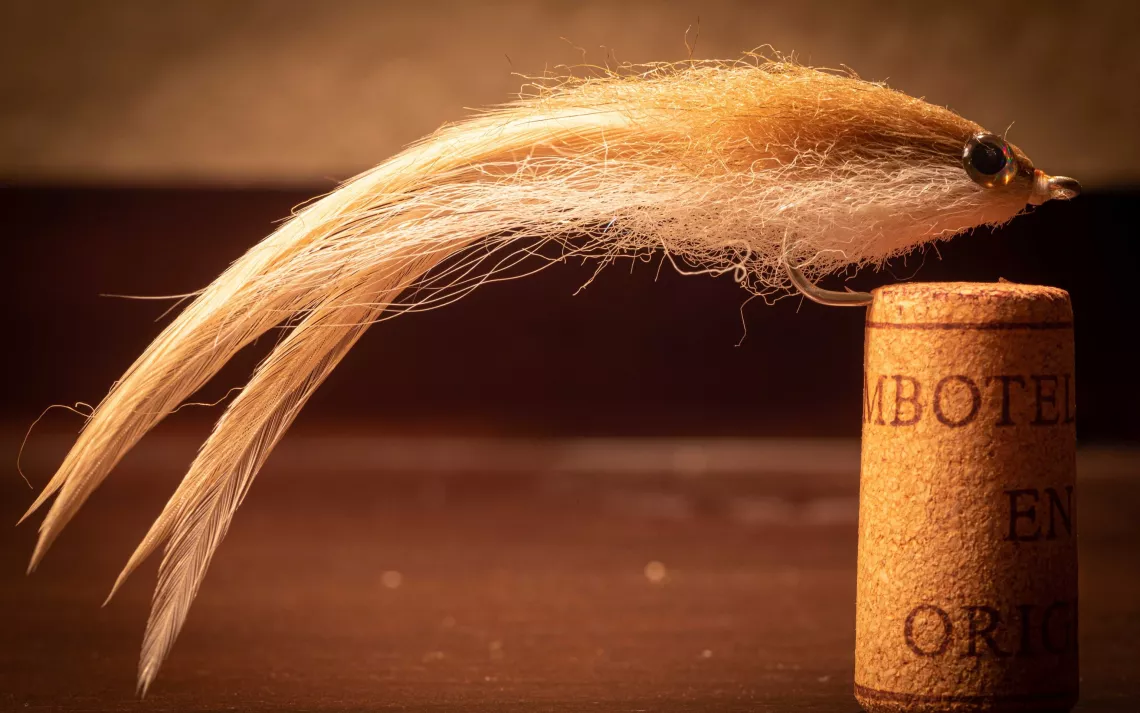
The fly: strung saddle mullet
Materials used: strung rooster saddle tail, EP fiber body, living eyes
Organism it imitates: baitfish mullet in salt water
Flies don't just mimic insects. This larger pattern falls under the category of streamers, which are meant to be cast out and quickly stripped back toward the angler to simulate the swimming of a bait animal. Streamers can mimic fish, leeches, crayfish, and any number of other small organisms.
This pattern stands out for the long rooster saddle feathers that give a fish-like appearance to the fly. Streamers are great for both fresh- and saltwater species, and this one is meant to imitate a mullet for saltwater fishing.
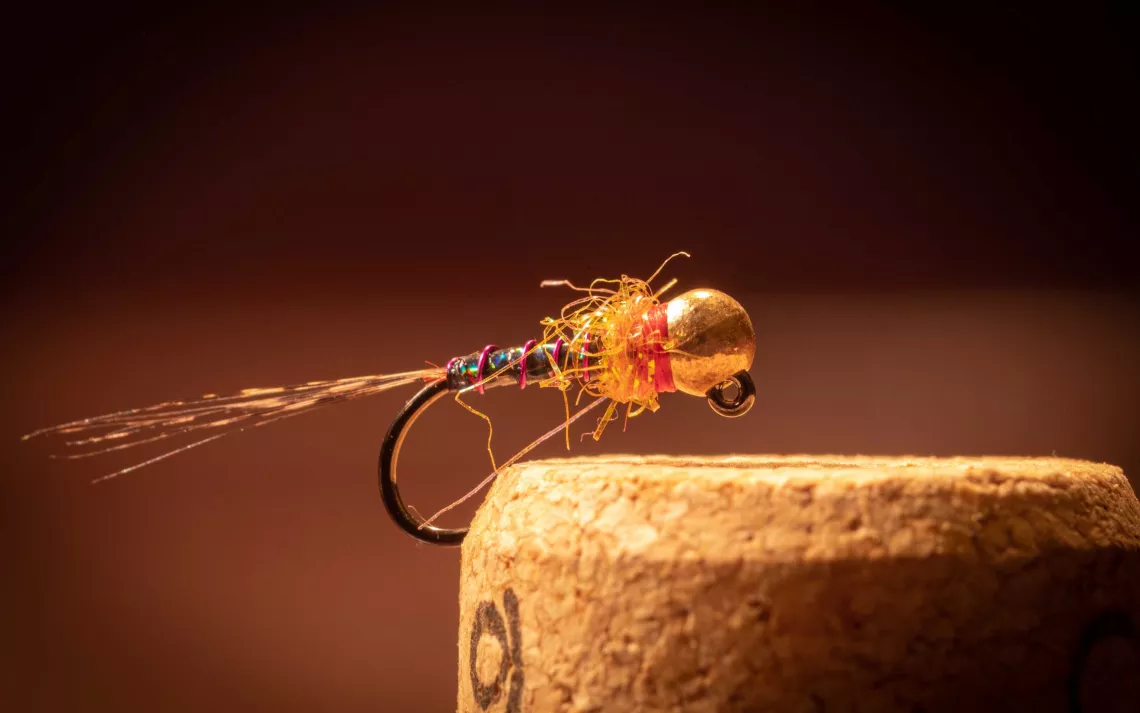
The fly: holographic frenchie
Materials used: coq del leon tail, wire rib, Ice Dub collar, UV resin
Bug it imitates: mayfly nymph
To be successful, the angler must understand the ever-changing cycles of the river ecosystem. Trout are attuned to the most abundant food source on a given day, and what works on a day in late July may not catch fish even a few weeks later.
Paul uses a mix of materials to make this attractor pattern shine. The tail uses rooster feathers, while the body and collar contain colored wire and reflective synthetic material to make it stand out. The body of the fly is coated with an ultra-hard UV resin that both protects the fly and gives it a smooth appearance underwater.
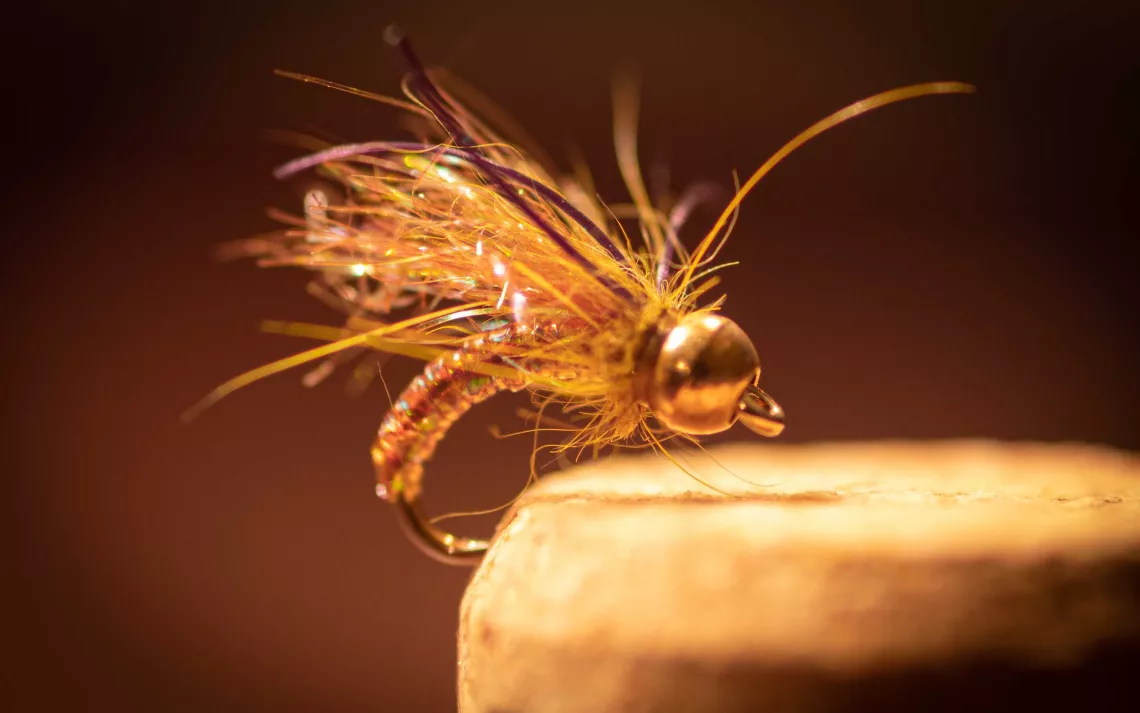
The fly: high-fidelity caddis
Materials used: vinyl rib body, Wiggle Dub wing, Simi Seal collar
Bug it imitates: caddis nymph
This subsurface fly is tied to mimic the larval stage of the caddis fly. Caddis flies live most of their lives underwater in their larval form before hatching into adults. Some larvae live and move freely along the bottom of the river, while others live in hard casings they construct and attach to stones on the river bottom. When ready to emerge as adults, they transform into a pupal stage which swims freely in the water toward the surface, where it hatches as an adult.
This fly imitates the free-living larval stage of a caddis fly that has lost its footing on the river bottom and is therefore an easy meal for trout.
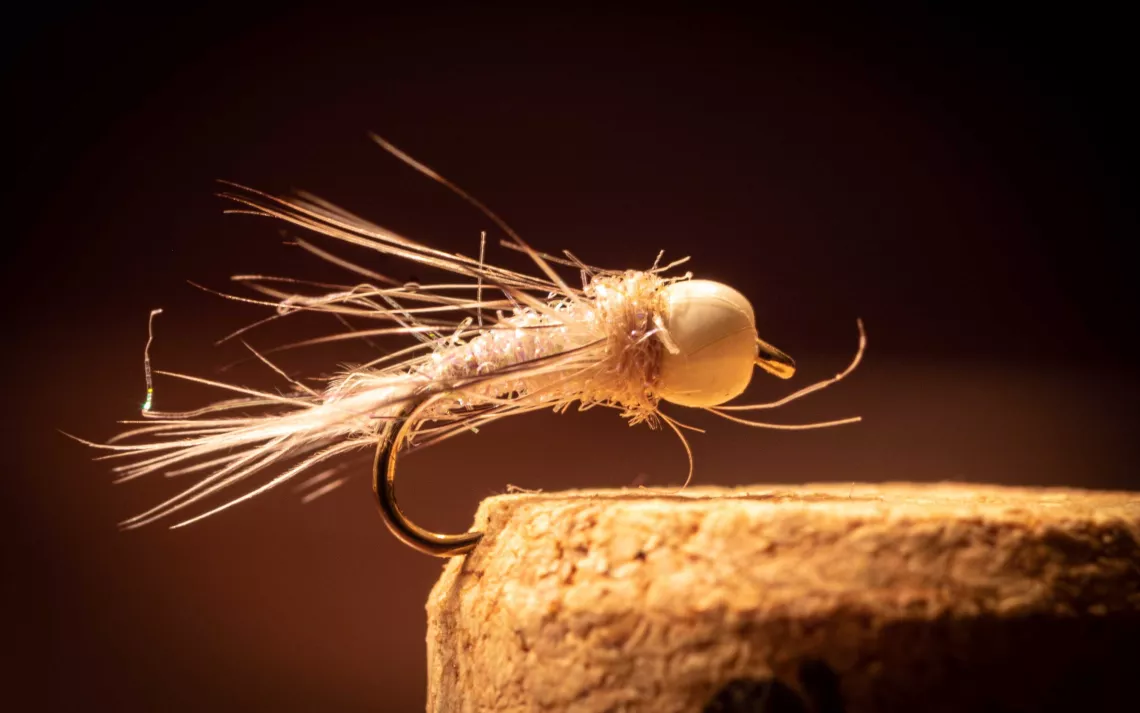
The fly: hoth
Materials used: partridge hackle, strung rooster saddle tail, Ice Dub body, Glow beadhead
Bug it imitates: caddis or mayfly nymph
Mayflies and caddis flies both spend most of their lives in aquatic, larval stages. They often have similar forms, and a single fly can simulate more than one type of insect.
In this fly, Paul makes use of both natural and synthetic fibers to catch the fish's attention. The bead glows in the dark to stimulate fish response, while the dubbing used to make the body has UV reflective material in it that simulates the sparkle off an insect's body, making the pattern look more "buggy" as sunlight hits it underwater.
Paul von Gontard (pictured, below) is a Missoula, Montana–based professional fly-fishing guide and fly tyer who was born into a family of fly-fishers in Montana and grew up fishing waters in Australia, Latin America, Europe, and the Rocky Mountain West. His favorite species to catch in Montana are northern pike, brown trout, and bull trout. Conservation and ethical fishing are central to his ethos. Over the years, Paul has honed his abilities and become one of the most sought-after guides—and fly tyers—in western Montana.
What exactly do we mean by "tied flies"? An artificial fly or fly lure is the primary type of lure used by fly-ishers, and they're usually tied by hand. In general, artificial flies are imitations of aquatic insects that are natural food of the fish species anglers are trying to catch. Here, Paul shows off an eclectic tying style that highlights both classic and modern materials, and discusses the insects each tie is meant to imitate, as well as its intended effect on fish. This collection includes traditional patterns plus some of Paul's own creations, as well as adaptations from fellow contemporary fly-fishers.
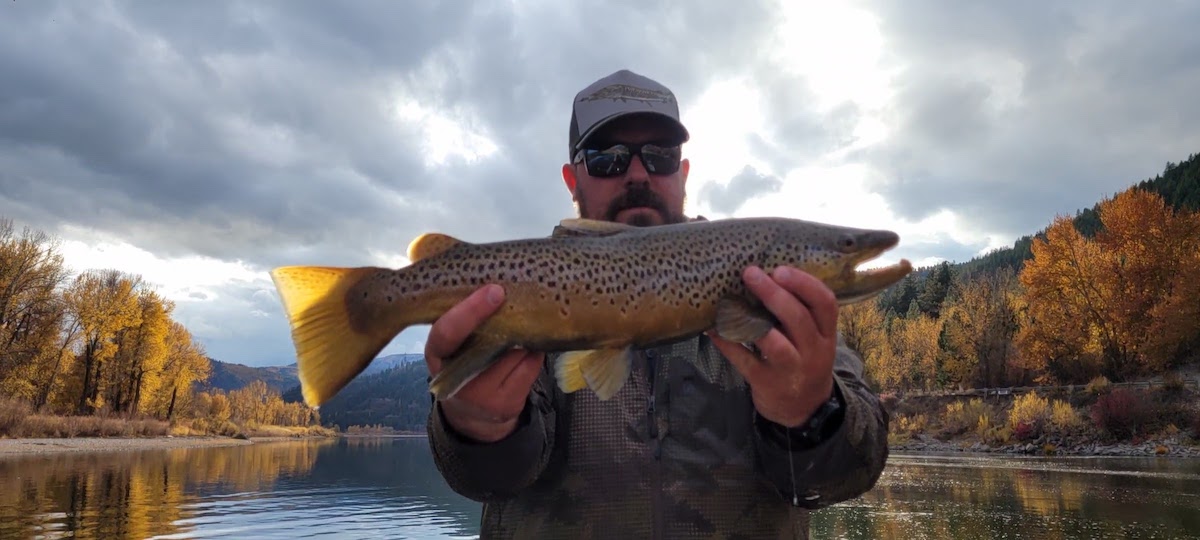
Kevin McMullen is a dermatologist and astrophotographer based outside Missoula, Montana. Follow him on Instagram.
More articles by this author- Keywords:
 The Magazine of The Sierra Club
The Magazine of The Sierra Club


